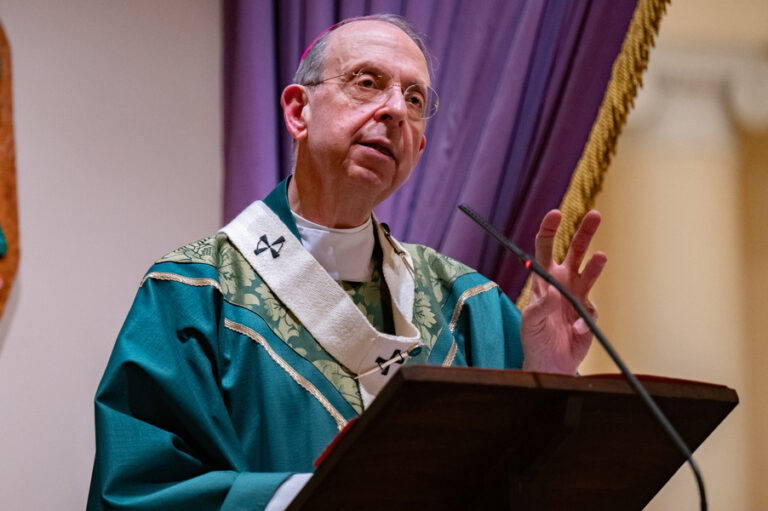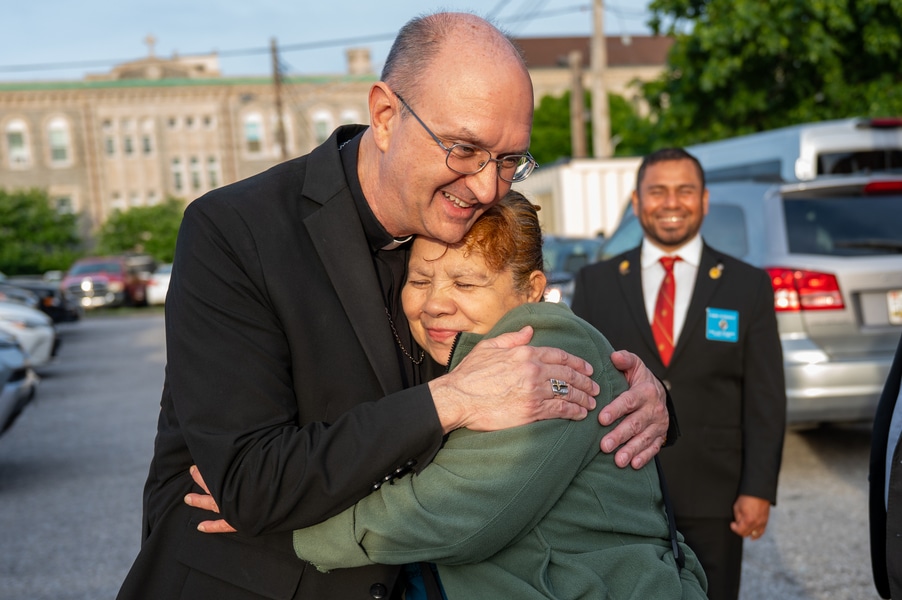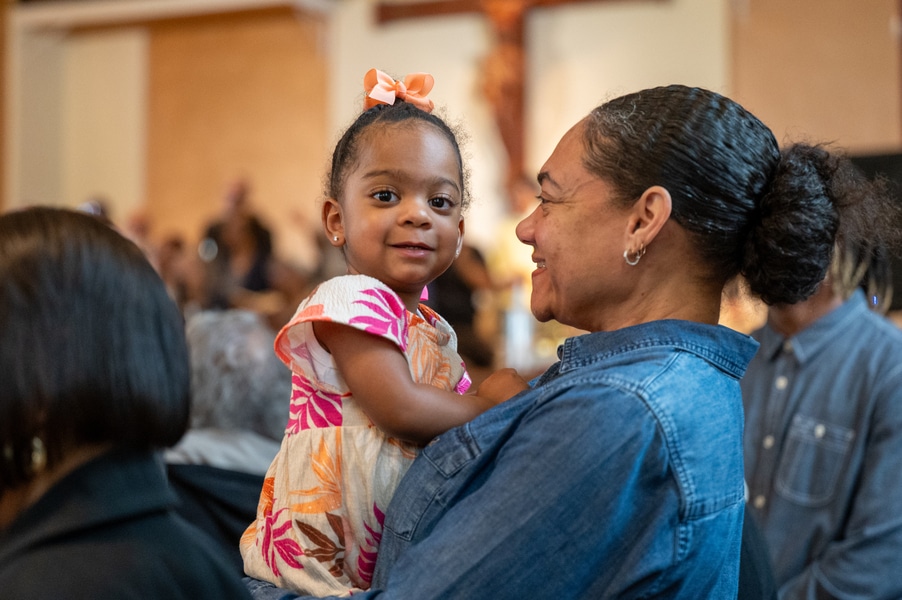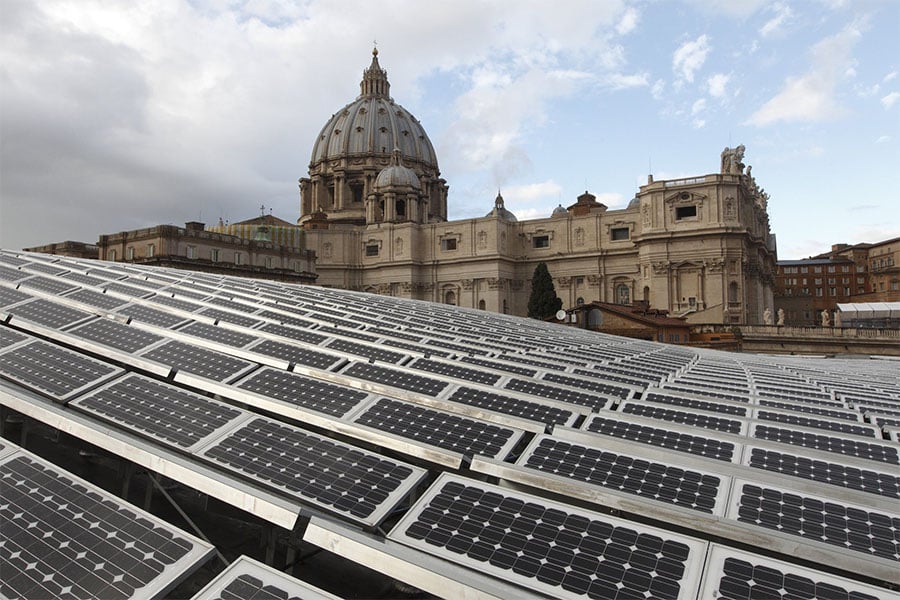The Archdiocese of Baltimore revealed the final plan May 22 for parish planning in Baltimore City, with 23 parishes at 30 worship sites, about half the current number of churches available for Sunday Mass.
Currently in Baltimore City and some nearby areas of Baltimore County that were part of the project, 61 parishes at 59 worship sites serve approximately 5,000 Catholics. They make up about 1 percent of the Catholics in the archdiocese, served by 44 percent of the parishes.
The Seek the City to Come initiative began in fall 2022 with listening sessions, followed by visioning, discernment and decisions. The archdiocese released a proposal in April that would have created 21 parishes at 26 worship sites, so the final map is an expansion of that plan.
“The whole orientation of Seek the City is toward the creation of parishes that are well positioned and well equipped to evangelize neighborhoods and to really gather the people in those neighborhoods, especially the unchurched, around the table of the Lord,” said Archbishop William E. Lori. He noted that the goal is to create “parishes that have what it takes to have a full range of pastoral services to do outreach, to do social ministry, and, if I may say, to be a light brightly visible in the neighborhoods where they exist.”
Story continues after graphic
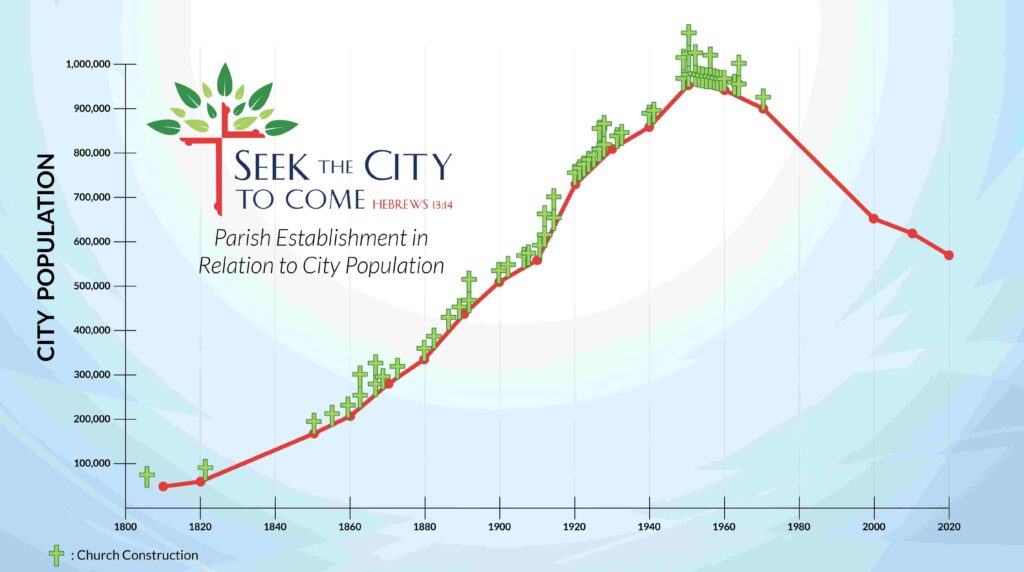
That echoes the theme of two of his pastoral letters – “A Light Brightly Visible” in 2015, and “A Light Brightly Visible 2.0” – that sought to frame parish planning with a view toward missionary discipleship.
The archdiocese sought feedback on the proposal released in April at four public forums, which drew thousands of people, and the archbishop acknowledged that the interest at those events was beyond what most of the venues that were selected could hold. He said that was part of the “bottom-up, synodal process” of listening and responding. The final map makes that evident, since it is different from just five weeks earlier.
“People spoke passionately. People demonstrated their love for their parishes,” the archbishop said. “But also, there were points made in those meetings that were very constructive and helpful in shaping the final map.”
The Seek the City initiative included 20 months of effort by a working group of about 250 clergy and parish leaders from the city, with assistance from several departments at the Catholic Center. Seek the City leadership visited every parish site in the study area for an assessment of facilities and needs, and met with parish leadership for prayer and listening.
Open, prayerful discussions were held at points in the process, before the working group gathered to develop proposals that could be refined. The process also included data about the number of parishioners; the practice of sacraments such as baptisms, weddings and funerals; and other demographics
Archbishop Lori estimates that the archdiocese has heard some 6,000 voices in the process. “We recognize that not everyone will be pleased with the outcome. But we truly have striven to listen. And listening has truly affected the outcome,” he said.

Bishop Bruce A. Lewandowski, vicar for Baltimore City and co-director of Seek the City, said the initiative provided many and varied ways for people to be heard – in-person visits, parish visits, open public sessions, emails, letters and phone calls.
“The reality of it is, you know, at some point we have to stop and say, I think we’ve got a good sense of what people are concerned about, what they’re hoping for, what they might be worried and anxious about, what ideas and other possibilities that they have for the parishes. You get the point where you say, ‘OK. I think we can move forward.’”
He said every comment submitted was considered. “Every piece of it has been very valuable in this process. It doesn’t mean that we’re always going to be able to do what people are asking, but we have listened, and we know the concerns.”
The bishop said that input will also be helpful in the next phase of implementation.
Some worship sites were moved or added in the final plan. In addition, a proposal to have possible worship sites at the Edmondson Village Shopping Center and the Cherry Hill Town Center was removed from the final plan because original worship sites will remain.
Bishop Lewandowski said the overall plan has more parishes and worship sites than the proposal based on feedback and a closer look at the data. The goal was to have fewer, larger parishes spread out to ensure a presence in many neighborhoods across the city to renew the work of evangelization.
“We mean evangelization in the strict sense: forming missionary disciples and going out into the neighborhoods and bringing the Gospel,” Bishop Lewandowski said. “Is everybody going to like this? No, but can we live with this? I hope so. And can we move on with this into a future where we’re really forming new parishes that will have evangelization as their first priority? I think it’s possible from what we’re presenting now.”
He said the current configuration of parishes in the city spread the church too thin. “We wanted to strike a balance, because too few would not be a solution, either. And we want to make sure that we’re strategically placed throughout the city specifically for that outreach and evangelization in neighborhoods.”
Bishop Lewandowski said implementation of the plan will be phased in, with archdiocesan offices providing support in human resources, clergy personnel, facilities, finance and the Office of Parish Renewal in the Institute for Evangelization. For most parishes, the new configurations and mergers will be done by the first Sunday of Advent 2024, Dec. 1. For others, it could be the first Sunday of Lent 2025, and for some even longer than that.
He said, “Implementation doesn’t just mean moving people from one church to another, accommodating records, finding employment for parish employees.
“What we’ve learned in other dioceses is it takes maybe three to five years for some people to settle into a new parish configuration. So, implementation on paper is very different from the lived experience. There’s going to be a great need for patience, flexibility, kindness, gentleness and compassion because it is a jolt to the system.”
The churches in the city that will no longer be worship sites for daily or Sunday Mass will remain available to parishioners for weddings, baptisms or funerals, at least until the newly formed parish decides how best to utilize all the properties.
“We want the new parish to be successful and financially strong, to be well resourced and so if any of the merging properties are sold, those funds go with the people to their new parish – according to Canon Law, it follows the territory and the people,” Bishop Lewandowski said.

The bishop also said it’s important to remember that nothing changes immediately on the day the plan is announced. Jobs at parishes remain in place, ministries continue. Weddings or baptisms that have been scheduled will not be canceled. “Will I show up on Sunday and the church is closed? No. … This will be phased in and communication will be of the highest importance so that everybody knows what’s happening and when, so that nobody’s caught off guard.”
The archdiocesan implementation team will meet with each new parish configuration because each has a unique character.
Bishop Lewandowski acknowledged that many people who live outside the city now attend churches in the city, and that some may choose a church closer to home in a nearby county. He said he hopes parishes can retain those people, while reaching out to more residents in their own neighborhoods.
People are free to choose where they attend, and it will “take a while for people to figure out where they want to make their new spiritual home,” the bishop said.
He added that this plan was necessary to renew the work of the Gospel and reestablish the church in the city. While it is painful and sad in some ways, “I do think it is a new beginning and a new start that will bear fruit for a great and brilliant future for our church in the city.”
He believes that in a few years, the church will be able to look back on this time and see new life, new growth, renewed mission and energy and a revitalized church. “We live in the hope of new life to come.”
Archbishop Lori said the initiative “aims to create bonds of cooperation and collaboration among the parishes themselves, to avoid a parochial competition and to foster in its place a sense of shared ministry, shared concern for our city and its environs, shared concern for those who live there and who are in need of the Lord and the faith.” That includes new forms of partnership with Catholic Charities, Catholic education and Catholic health care organizations, among others, especially those supported by the Annual Appeal for Catholic Ministries.
Geri Royale Bird, co-director of Seek the City, sees the process that got the archdiocese to this point as the keystone to collaboration moving forward. The listening, visioning, discerning and modeling sessions created an opportunity and a platform of working together and gave parish leaders a chance to work with people they had not known before.
“What’s valuable is that all along we have been working together. Now we are going to put that to use even more,” she said. “The excitement of this is that … we get to have a fresh start to have an evangelizing church now.”
Byrd said, “I’m hopeful that we’ve learned from that and we’ve exercised some different muscles on how we can be collective and how we can collaborate together.”
She understands some people will be anxious, but she hopes they “will look beyond that and know that there are brighter days because we’re creating a landscape where we will have the resources … to really do the work.”
Archbishop Lori said, “We want to bring to bear upon the city of Baltimore and its environs all the gifts, all the ministries of the Holy Spirit,” the archbishop said.
He said although the timeline previously announced envisioned a final plan announcement in June, the time was right in late May. Having finished the consultations and public feedback sessions, and incorporating that feedback into the revised plan, there was no reason to hold parish leaders and their parishioners in suspense.
Clergy assignments for the new parishes will be forthcoming.
For now, the new parishes will take on the name of the church where it is sited, but the parishioners of the newly formed entity can eventually petition to change that name. In such cases, usually the parishioners make suggestions, and the pastor can present three or four names to the archbishop for his final choice.
Archbishop Lori said the work of Seek the City is not over, because the archdiocese will continue to walk with the parish communities through implementation.
The Archdiocese of Baltimore is not the only diocese going through parish planning in the light of evangelization, given the realities of fewer resources and changing demographics. Most recently, the Diocese of Peoria, Ill., announced that as a result of its two-year planning process, “Growing Disciples,” the diocese’s 156 parishes will become 75 parishes with 129 worship sites. Twelve parishes will merge into neighboring parishes, while another 107 parishes will merge to create 38 new ones.
Email Christopher Gunty at editor@CatholicReview.org
To view the Seek the City to Come final plan and a map showing new parish configurations, visit archbalt.org/seekthecity.
Read More Seek the City to Come
Copyright © 2024 Catholic Review Media

